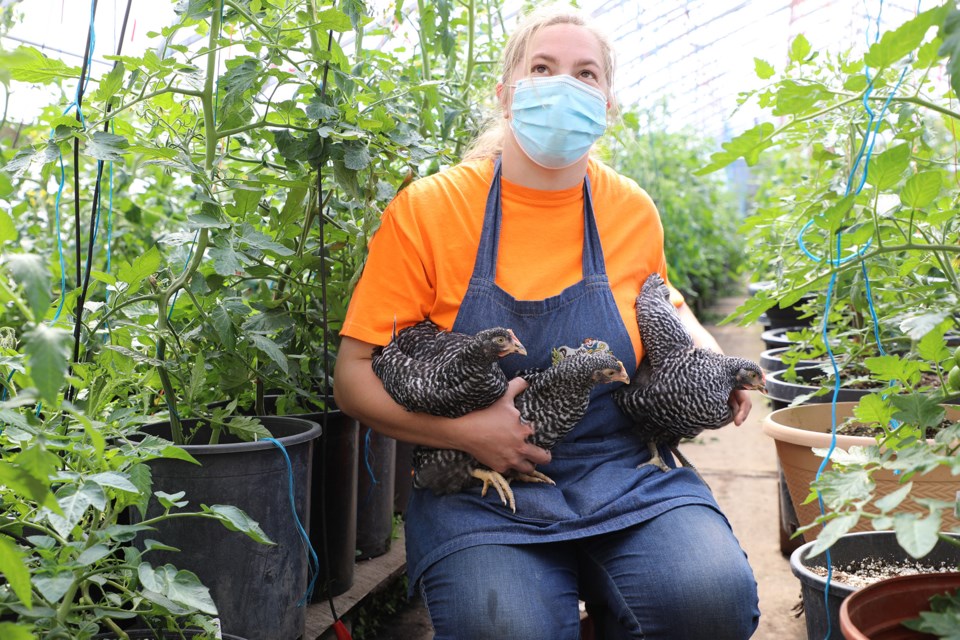I knew it was spring when I looked down at my shirt while cycling recently and saw it was covered with tiny cabbage-eating black flea beetles. Yuck.
I had seen another sign in my mom’s kitchen weeks earlier. She was collecting coffee grounds in a pie plate to spread around her garden – the grounds kind of repel red lily beetles, she said.
May is the traditional start of planting season around Sturgeon County, and with it comes the return of countless slugs, bugs and other garden pests.
While you could just saturate your strawberries with insecticides, that kind of defeats the point of growing healthy food for your family, said Tam Andersen of Prairie Gardens & Adventure Farm.
And most garden bugs, particularly the big beetles, spiders and centipedes, are there to help, added certified professional horticulturalist Jim Hole.
“The vast majority of insects are good,” he said, and offer free pest control services for your garden.
The Gazette asked Andersen and Hole for some ideas on how to guard a garden the green way.
Know your foes
The first step when it comes to controlling garden pests is to accept that you cannot, and should not, kill them all, said Hole and Andersen. Predators such as songbirds like to eat those pests, and you need at least a few pests around if you want their services. That means learning to live with some amount of crop damage.
“Mom always said, ‘One for you, one for the bugs,’” Hole said.
The second is to ID your bugs. Hole suggested collecting some and taking them to a plant specialist.
Hole said ants, bees, centipedes, spiders and big black beetles should be welcome in your garden, as they pollinate your crops and prey on pests. Ladybugs and lacewings are especially welcome, as they eat hundreds of plant-drinking aphids a day.
Choose your tools
Once you have confirmed you have a pest, pick your tools.
One tool is the calendar. Those little black flea beetles typically emerge in early May to eat your cabbages and turnips, for example, while root maggots turn up in early June. Plant those crops in late June, and you can avoid both, Andersen said. She personally holds off on turnip seeding until about mid-August to avoid all pests.
Physical barriers are another, Hole and Andersen said. Row cover cloths keep cabbage moths off your broccoli so they can’t lay eggs, while a thin layer of granite grit can stop fungus gnats from emerging from houseplant soil. Sharp-edged diatomaceous earth can be sprinkled around tomato plants to deter slugs.
Chickens excavate and eat any bugs hiding in your soil, and you can create a patrol route for them around the edge of your garden with wire, Andersen said. Just be sure to keep them away from your plants, or they will peck them to bits.
Sprays and traps will work in some circumstances. Andersen said sticky cards trap many insects, while Hole said insecticidal soaps harm aphids without killing tougher aphid predators. Hole said soaps must be applied early and often in order to keep pest populations in check, and should be used early in the morning before predator bugs become active.
While ladybugs will eat your aphids, Hole advised against adding more of them to your garden. Most ladybugs you get from garden stores are imported seven-spotted ones, which displace our native ladybugs and tend not to stick around your garden once released.
And don't forget those built-in bug manglers attached to your arms. Andersen said her solution for aphids is to just squish them with her fingers.
Andersen said eco-friendly pest control is about living in harmony with nature. If you try too hard to kill all your pests, you might end up with a dead garden.
"A few insects is always okay," she said.
As for my mom's coffee grounds, Hole and Andersen said not to bother with them – there's no scientific evidence that they work on bugs.



